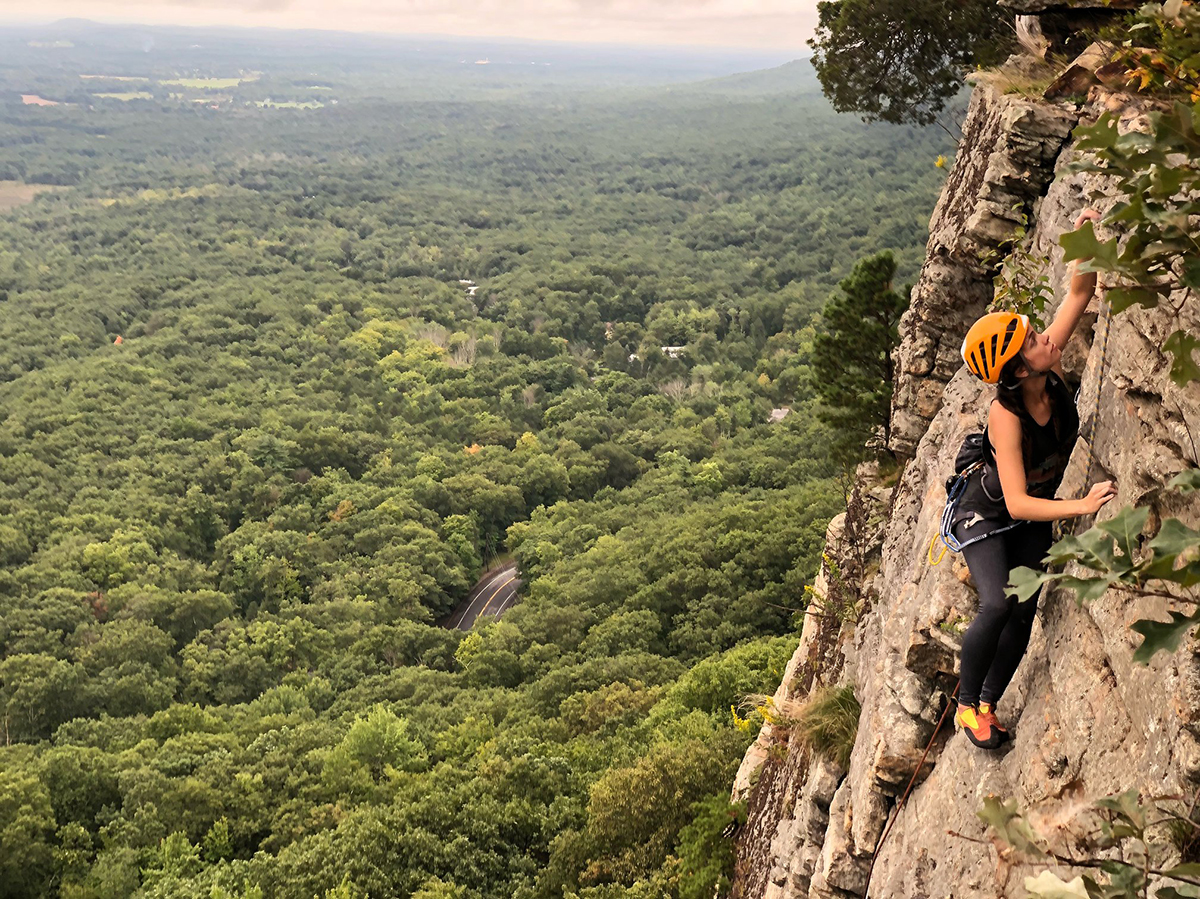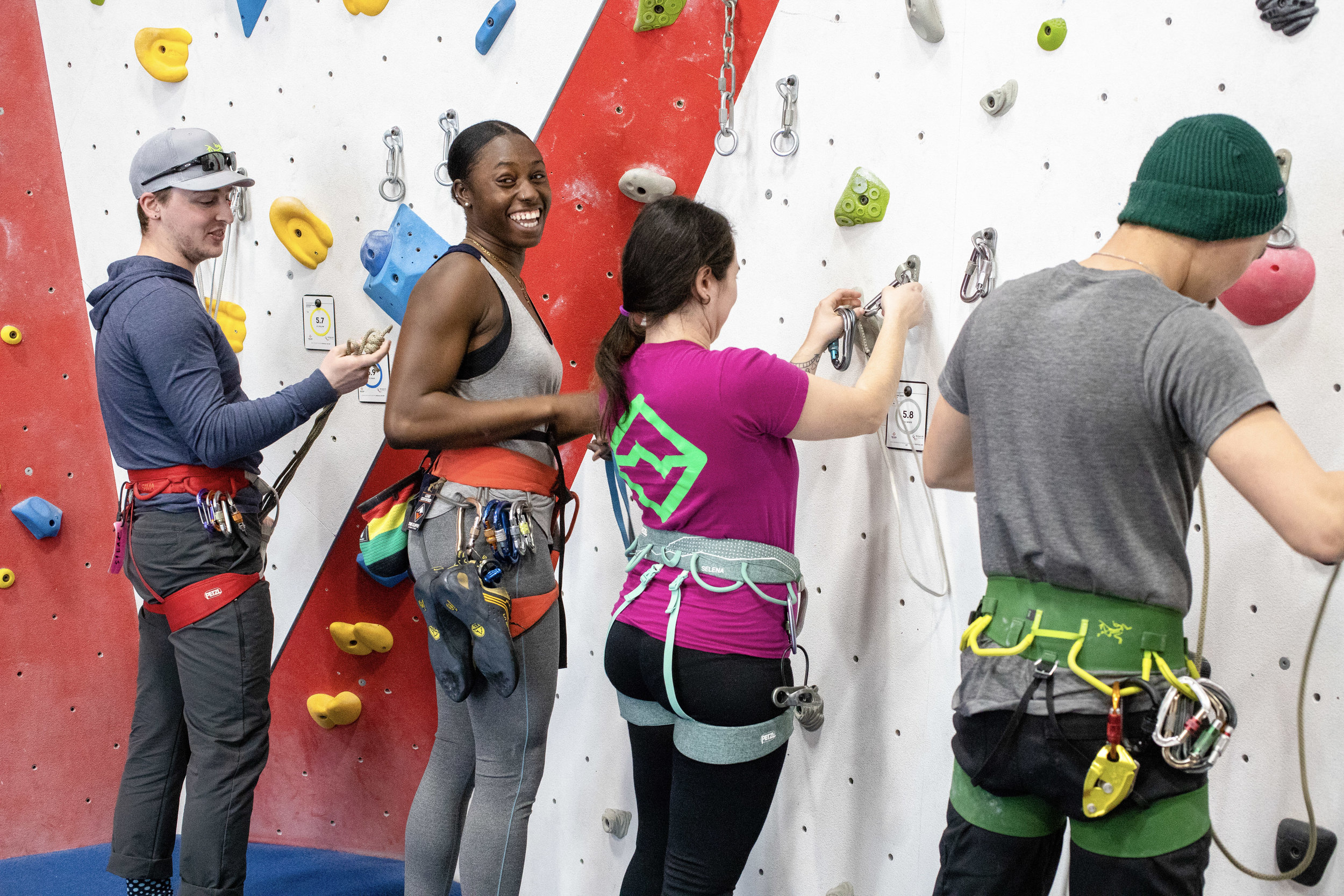So You Want To Climb Outside: A Progression for New Climbers
Written by Eli Strauss, Instructor of The Cliffs at LIC
So you just started climbing in a gym! Good stuff! You’re going to make new friends and meet people with common interests you never would have met before. You’re going to get in the best shape of your life. You’re going to start filing off your skin when it cracks and downsizing all your shoes, even your sneakers! You’re going to quit your job, move into a used van that you “outfitted” with some foam for sleeping and become insta-famous for your #vanlife...Okay, maybe you’re not going to go quite as far off that deep end, but if you do, it might be good to have an idea of what you know, what you don’t, and where to learn the ins and outs of climbing in a gym and eventually outdoors.
TOPROPE CLIMBING
Toprope climbing is a great place to start. It's likely that you already took our Intro to Climbing class (LIC / Valhalla) where you learned how to belay on a toprope. As the name suggests, the rope runs through an anchor that's already at the top of the wall so when the climber falls, they don’t go far at all. Think: leaning back in a recliner that's 30 feet off the ground.
It doesn’t take us that long to teach you how to use this kind of rope system, but it’s pretty important to remember that the rope has to get up there somehow. This is where you start to wonder about lead climbing. Spoiler: it’s scary and not nearly as casual as top rope climbing.
LEAD CLIMBING
Lead climbing involves the climber bringing the rope up with them as they go and clipping it through intermittent protection points. This means that climbers can go up walls that aren’t already equipped with a rope. This not only makes the climbing a bit more difficult, but also scarier, because when the climber falls, they come down twice the distance they climbed past their last piece of protection (if you climb 5 feet above a bolt then fall, you’ll come down the five feet to the bolt plus a five foot swing under the bolt), plus the stretch of the rope, plus the slack in the system. Basically, it's not at all uncommon to take 10-15 foot falls even indoors. Palms getting a little sweaty? Good. It's probably best you learn this stuff from the professionals rather than your friends, so give our Sport Lead Basics (LIC / Valhalla) class a shot when you’re feeling ready.
GETTING OUTSIDE
Aright, so you’ve been leading for a good chunk of time now. The Great Outdoors is calling, but there are still some important specifics about climbing outside that you’ll probably want to know before you show up at The ’Gunks with a rack of quick draws. That’s where our Pre-Crag classes (LIC / Valhalla) come in!
Anchor Fundamentals
Pre-Crag 1: Anchor Fundamentals (LIC / Valhalla) lays down the fundamentals of basic anchors so you know what it is you’re looking at when you trust your life to a big ol’ tree or some bolts some old dude drilled into the rock. Anchors are an essential part of any roped climbing you do outdoors.
Sport Anchors and Cleaning
Have you been lead climbing inside for a little while (at least 4-6 months) and are getting interested in taking those lead skills outdoors? Sport climbing is the closest thing to climbing indoors but on real rock. The cliff is equipped with bolts but frequently no attachment points after that. It's a great way to transition to climbing outside but still has some pretty specific skills to learn, such as how to hang up the actual clips and then get all those new shiny (expensive) clips back when you’re done! The vast majority of climbers who go outdoors are sport climbers. Take our Pre-Crag 2: Sport Anchors and Cleaning (LIC / Valhalla) class to get the beta.
Rappelling
So you made it to the top of the climb. How do you get down? Take Pre-Crag 3: Rappelling (LIC / Valhalla) to learn how to lower yourself back down to the ground. According to the American Alpine Journal, the majority of accidents on real rock happen while rappelling. Don’t be a statistic! Learn the proper setup, backup systems and safety checks that comprise best practices for rappelling.
Intro to Multi-Pitch
The taller the rock gets, the more logistically complicated it can be. Multi-pitch climbing is going up something tall enough that the climbers need to stage it out or create intermittent “camps” going up the rock. Sometimes they’ll actually sleep up there. Sometimes it’s just a staging ground to keep climbing. Needless to say it’s a logistical nightmare! Multi-pitch climbing not only requires a substantial amount of experience but also lot of planning that becomes specific to the objective. Don’t just jump into the deep end on this one. Take your sweet time climbing single pitch routes indoors and out. Learn what you like and don’t like. Meet lots of climbers and develop good relationships. Nothing is worse than doing a long multi-pitch climb with person you just discovered you don’t like very much. Want a better idea? Take our Pre-Crag 4: Intro to Multi-Pitch (LIC / Valhalla) course so you can lead the way.
Belay-Escape and Self-Rescue Basics
Feeling comfy when everything is going right? Wonderful, you’re a real rock climber now! But what happens when something starts to go wrong? How can you climb your rope when you can’t climb the rock? How can you go get help if you’re belaying a climber who you can’t safely lower? The questions are infinite. Unfortunately, so are the answers—so get started with the basics. Pre-Crag 5: Belay Escape and Self-Rescue Basics (LIC / Valhalla) will give you the skills to have peace of mind in most circumstances that recreational climbers will encounter on real rock.
_
Hopefully you’re feeling a little better about a typical progression from indoor to outdoor climbing. Remember: climbing is amazing and fun, but also inherently dangerous. Don’t hesitate to reach out to Cliffs Instructional staff with any questions at all. Find a mentor with a lot of experience and buy them beer for teaching you their ways. Use resources like Mountain Project or better local resources for specific areas such as guidebooks and apps such as GunksApps. And lastly, brush up on your Leave No Trace ethics; climbing is growing faster than it ever has before and how we treat our outdoor areas directly affects our continued access to real rock.















